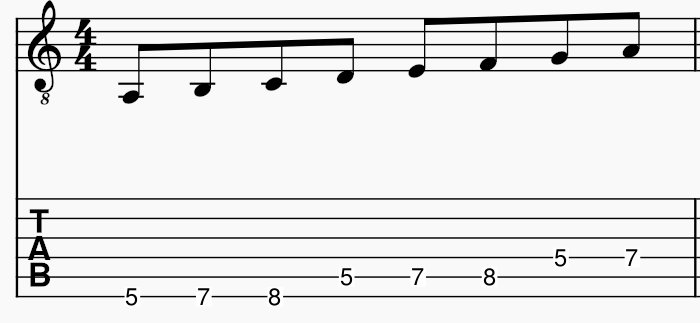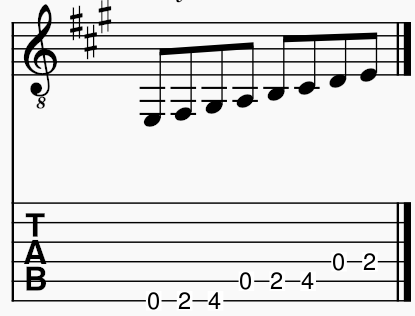Unleash Your Creativity With The BEST Keys For Metal Guitar | Metal Music Theory
Mar 31, 2024Are you stuck playing in the same key all the time? Once you know major vs minor scales, it's easy to favor the minor scale, especially if you like rock and metal music. Lots of us metal players have a habit of playing in E minor specifically because we love the open E power chord and gravitate toward soloing around the 12th fret. Today, I am going to show you the best three keys for metal that do not include E minor. Since most of us love that open E power chord, I've made sure that the chord works in each key. Plus, I'll show you the modes that work best over that chord in each situation.
A Minor
The key of A minor is depicted by a key signature of no sharps or flats. The A minor scale is the baseline note sequence used to represent this key.

The open E power chord (E5) is the biggest and boldest chord of them all. The E5 chord fits nicely into the key of A minor as the v chord. For example, if you want to write something that leaves the listener in suspense, you can use a half cadence. A half cadence refers to a musical phrase ending on a v chord. In the key of A minor, you can use a half-cadence by ending your phrase on an open E power chord. Your listeners will beg for continuation!

Within the key of A minor, the E Phrygian mode (shown below) is a great scale to use over the open E power chord. This mode can be used to make devastatingly heavy riffs and uniquely exotic solos.

B Minor
The key of B minor is depicted by a key signature of two sharps (F# and C#). The B minor scale is the baseline note sequence used to represent this key.

Within this key, the E5 chord serves as the iv chord. When writing a chord progression, a plagal cadence can be used to end a phrase with a iv chord to a i chord. In this case, playing an E5 chord followed by a B5 chord would be a plagal cadence.
In the key of B minor, the E Dorian mode (shown below) can be played over the open E power chord. This mode is great to use in conjunction with the pentatonic scale or the blues scale, and it lends itself nicely to rock-based music.

F# Minor
The key of F# minor is depicted by a key signature of three sharps (F#. G#, and C#). The F# minor scale is the baseline note sequence used to represent this key. We all know the song Crazy Train, right? That song showcases a legendary metal riff that’s played in the key of F# minor.

When playing a chord progression in F# minor you can make the open E power chord sound way heavier by playing other chords first, then saving it until sometime later. Since the listener becomes accustomed to the chord progression sitting in a slightly higher register, the E5 chord hits harder when it is introduced at a later time. This concept applies to the other keys mentioned in this lesson as well.
In the key of F# minor, the E Mixolydian mode (shown below) can be played over the open E power chord. The Mixolydian mode is the brightest sounding scale in this lesson. If you want to balance out your darker sounds with a taste of something brighter, the E Mixolydian mode can achieve that when you use it over an E5 chord.

Conclusion
In addition to the key of E minor, you now have three more keys to explore and unleash your musical creativity in. A minor, B minor, and F# minor are awesome keys you can use that allow you to riff on the open E power chord. The Phrygian, Dorian, and Mixolydian modes can be used to solo over the E5 chord in each of their respective keys. Expanding your understanding of music theory concepts such as keys, cadences, and modes will prepare you for sonic warfare. I strongly encourage you to give these keys a try. You may surprise yourself with new sounds!
Listen to each key in action and watch the full lesson here: Unleash Your Creativity With The BEST Keys For Metal Guitar | Metal Music Theory
Optimize your practice routine in 5 minutes with my simple, powerful, scientifically driven tool for guitarists.


